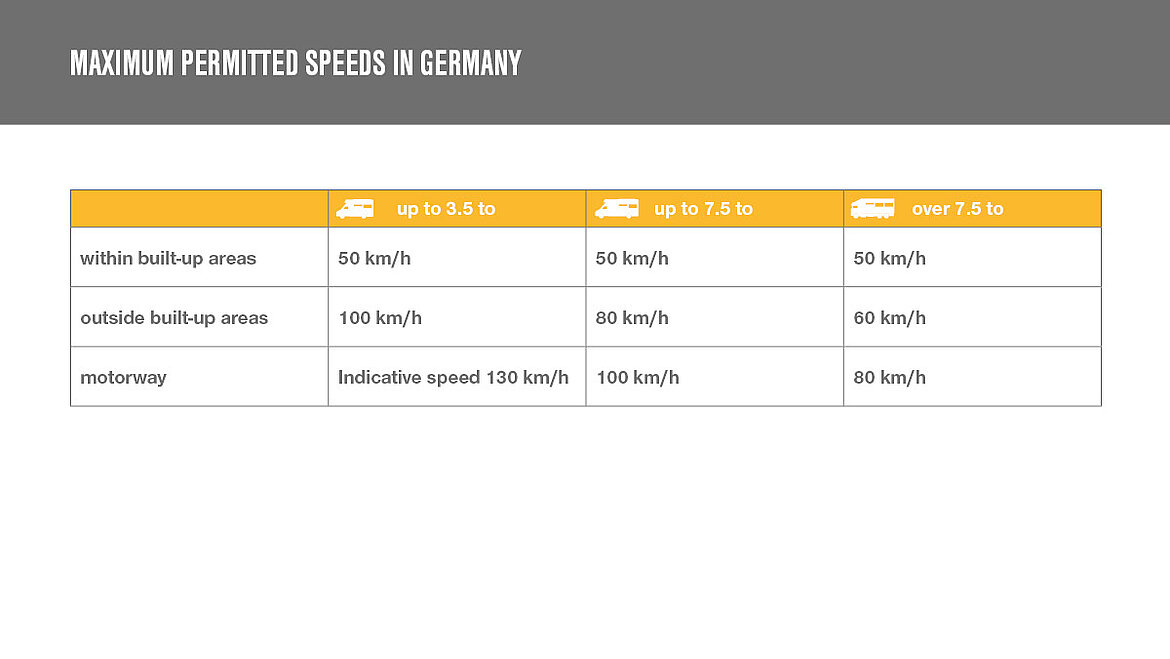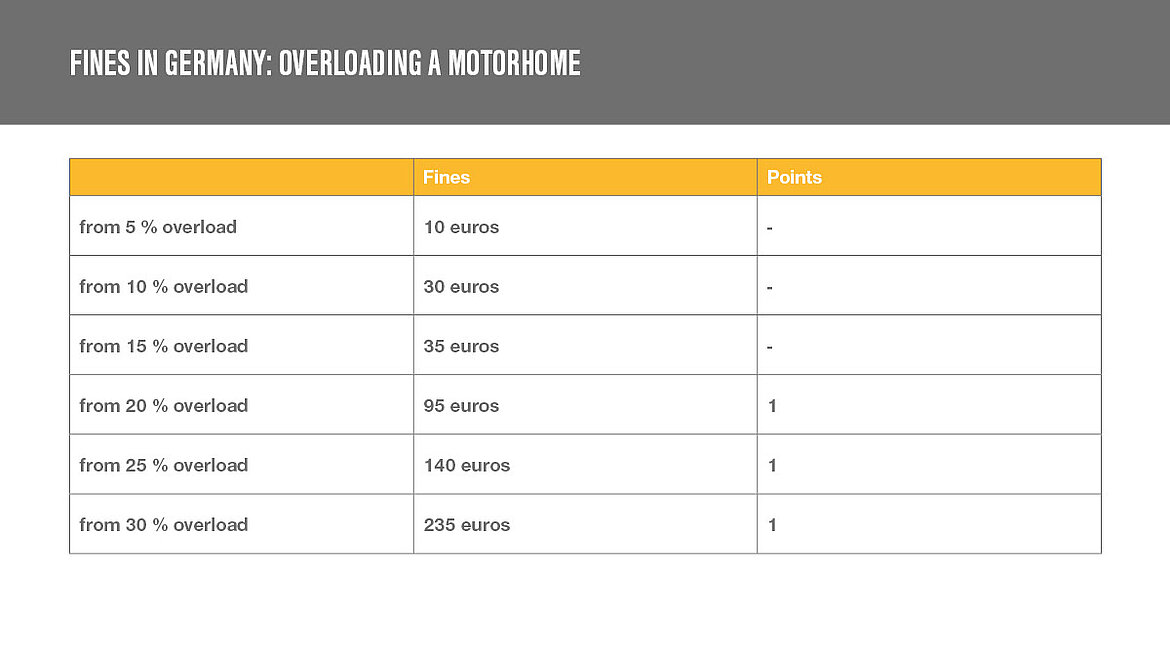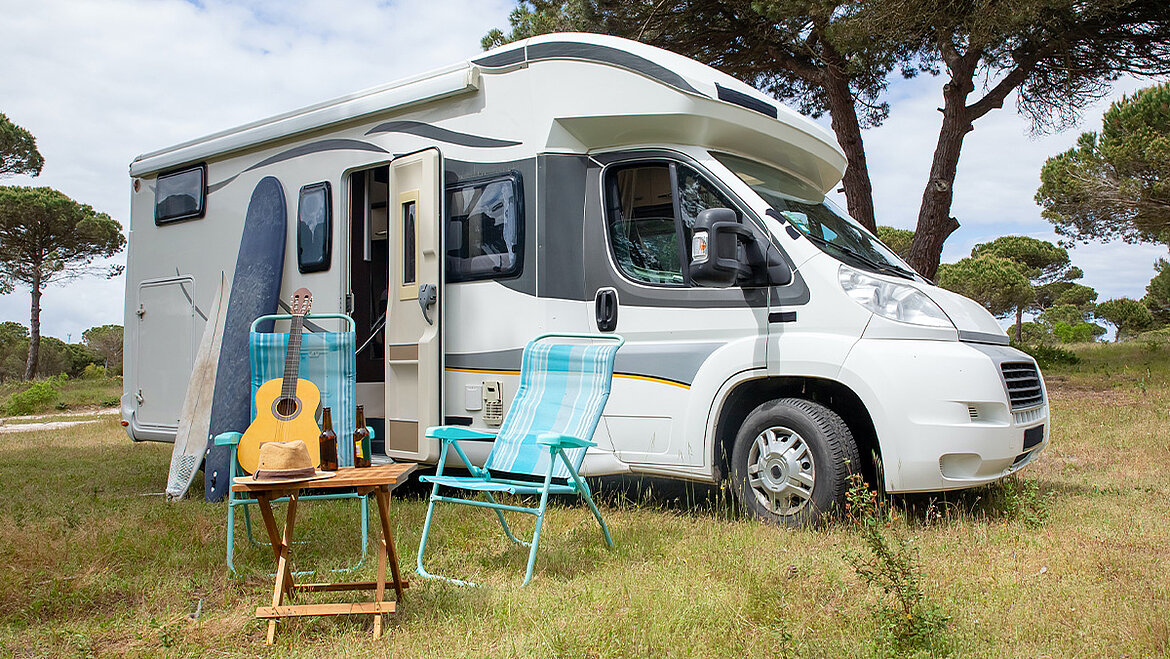The motorhome is ready – time to climb aboard, fasten your seat belt and set off for the most beautiful places in the world. As beautiful as this idea sounds, real motorhome owners know that this often has little to do with reality.
The motorhome first has to be packed before the journey to the favourite places can begin, and this process needs to be well considered. Every kilogramme too much can lead to overloading and, as a result, to compromised handling.
If this is the case, not only is the safety of the occupants at risk, there is also the threat of high penalties and, in the worst case, even the confiscation of their own home on four wheels. In this article, we will give you helpful tips and tricks on how and, above all, where you can best save kilos.
Motorhome weight classes – advantages and disadvantages
However, before we look at the contents of the motorhome, let’s first look at the different weight classes of motor homes – there are three: a permissible total weight of 3.5 tonnes, up to 7.5 tonnes and over 7.5 tonnes. This total weight can be found in the registration certificate (vehicle registration document) and consists of the unladen weight and permissible payload.
Motorhomes up to 3.5 tonnes
Probably the most popular motorhomes are those with a permissible gross weight of up to 3.5 tonnes. The advantage here is that anyone with a class B driving licence is allowed to drive one. There is also very little to consider with regard to speed limits in this weight class; for example, there is no general speed limit on motorways. Manoeuvring, turning and parking is also less complicated with a lighter motorhome, and you also save costs in tolls, ferry trips and vehicle tax. However, the smaller motorhomes also have disadvantages, as the luggage loading limits are quickly reached. But they can be cleverly packed, more on that later.
Motorhomes up to 7.5 tonnes
Variant two is motor homes up to 7.5 tonnes. These vehicles may be driven with the old category 3 driving licence, i.e. the car licence obtained before 1999. The new class B driving licence, which was introduced out after 1999, is not sufficient here. In this case, an additional class C1 driving licence is required, i.e. a small truck driver’s licence. While the advantage of these mobile homes is that considerably greater payloads are possible, there are also disadvantages. On German motorways, you are not allowed to drive faster than 100 km/h. Tolls, ferry charges and taxes are much higher.
Motorhomes over 7.5 tonnes
Luxury liners over 7.5 tonnes are rarely seen, but of course they do exist. If you’re thinking about buying a heavyweight like this, you should register with the nearest driving school right away. Motor homes with a permissible total weight of more than 7.5 tonnes may only be driven with a class C driving licence, i.e. the large truck driving licence. The advantages here are obvious: more luxury, more payload, more space. But the disadvantages are also obvious: higher costs, in every respect.
Please note: The EU is currently discussing raising the driving licence limit for motorhome drivers. If the application is approved, motor homes of up to 4.25 tonnes can be driven with a normal class B driving licence. We have compiled an overview of all motorhome types and what you should bear in mind when buying one here.
How much weight can be loaded?
The weight class up to 3.5 tonnes total vehicle weight (GVW) is the most common for most registered motor homes. This weight can be found in the vehicle registration document, as well as the unladen weight. This refers to the weight of the vehicle without payload. However, the minimum equipment required for driving is included in the unladen weight, i.e. a driver weighing 75 kilogrammes, a fuel tank filled to 90%, water tanks filled to 100%, a gas bottle, spare wheel and on-board tool kit. The difference between the permissible total weight and the unladen weight indicates the possible payload. Example: permissible gross weight 3500 – unladen weight 3150 = payload of 350 kilogrammes.
As a basic principle, the lower the unladen weight of the motorhome, the greater the possible payload. Motorhomes, whose side walls and roofs are made of GRP, i.e. glass fibre-reinforced plastics, are usually lighter, have a high mechanical strength, are resistant to chemicals, corrosion and UV radiation, and have the look of aluminium.
Outer sidewall
Our favourite composite for the exterior side wall: LAMILUX SUNSATION®. The most UV-resistant GRP face sheet in the world keeps exterior walls of motorhomes looking like new even after several years. This is because of its UV stability, which is 20 times higher than standard gelcoat systems.
Roof
Our composite favourite for the roof of the caravan: LAMILUX X-treme. The most high-performance composite material in the industry enables the use of hail protection roofs in motor homes to reduce the use of materials, thus saving weight, whilst also providing excellent impact resistance at the same time.
Flooring
LAMILUX Composite Floor is a smart flooring solution for the interior of the motorhome. This flooring not only looks stylish, but is also perfect for clever lightweight construction. The material-bonded joint between the decor floor layers and the LAMILUX GRP reinforcement means there is no need for the extra weight of adhesive coatings.
Inner side wall
Adhesive is also not necessary for LAMIfoamtex, a high-quality soft-touch surface. Often installed as a roof liner in the caravan, the innovative 3-in-1 solution can save additional weight.
GRP is therefore an all-rounder among materials. We have summarised where it is still used in the caravan industry for you in the following article.
Weigh the motorhome correctly
Before every journey, it is important to play it safe and weigh the motorhome. This can be done on a weighbridge, such as found at landfills, special truck workshops or simply at the MoT station. Here, it is important when driving onto the weighbridge that the caravan is fully loaded, i.e. the vehicle including all luggage, all passengers and even the dog, if he is coming with you. This is the only way to determine precisely whether the permissible payload has been complied with or exceeded.
Observe axle load
If you are standing on the scale with your motorhome, you should also check the axle load immediately. This refers to the weight that may be loaded on the front and rear axles. This value is also noted in the registration certificate and should not be neglected under any circumstances. Because even if the permissible total weight is not exceeded – if too much weight is loaded on the respective axles, not only is there a risk of high fines, but in the worst case, roadholding can also deteriorate significantly. The exact axle load is determined by initially driving the motorhome onto the weighbridge with the front axle only, then with the rear axle only. The latter in particular often bears the greatest weight, especially in motor homes with an external storage locker. For example, if bicycles are stored there, you should store food, canned food, bottles, water supplies, etc. in the front area of the caravan in order to distribute the weight as evenly as possible. Incidentally, this is also the reason why most water tanks are located closer to the front axle.
Penalties for overloading
If the scale shows that the total weight has been maintained and the axle load at the front and rear is correct, the journey can begin. However, if the values and the total weight are exceeded, it is urgently necessary to repack before the motorhome is driven on the roads.
After all, if it is too heavy, not only will the fuel consumption shoot up, but the handling will also be adversely affected. In the worst case, braking distances can be longer and important vehicle parts will wear out more quickly, and the vehicle's steering will be impaired. Incidentally, these are the three reasons why the insurance company often fails to pay in the event of an accident with an overloaded motorhome. It also becomes expensive if you are caught with too much luggage during a traffic check.
In Germany, a tolerance limit of 5% excess weight applies. As a rule, you will come away with a warning in this case. Anything above this and you will be fined. If you are more than 20% overweight, you may receive points on your licence. But be careful when travelling through other countries. Here, the penalties are often even higher and the tolerances are usually lower. In the best case scenario, you should not exceed the permissible total weight.
How to save weight
Let’s move on to the most important point – saving weight. Anyone with a permissible total weight of 3.5 tonnes must pay close attention to how much they are loading. Since you can take everything with you when holidaying in a caravan – which is why most motorhome owners travel on four wheels with their own home – there are a few tips and tricks for saving weight.
1. Water tanks
The water tanks should never be completely filled before the start of the trip – no more than half-full – saving you several kilos that can be added later. Most camping or parking spaces offer sanitary cabins and the option of filling water tanks on site.
2. Crockery
Do you really need good porcelain tableware for your motorhome holiday? There are many great alternatives that are not only much lighter, but also “quieter”, as the rattling of glass can be quite annoying when driving. It’s better to take plates and cups made of melamine, stainless steel, bioplastic, polypropylene or bamboo. The quantity can also be reduced. If only two people are travelling, consider whether two cups and plates, a pan and a pot, etc. are sufficient. Disadvantage: You may have to wash up more often. Please note: You can still take the contents of any glass bottles with you. Simply decant oil, wine or schnapps into plastic bottles.
3. Camping accessories
No camping holiday is complete without a camping table and chairs. But this outdoor furniture need not be heavy and bulky. Of course, there are also light alternatives here that are comfortable and take up little storage space. Speaking of storage space, readers in particular like to take several books with them on longer trips. However, these are often quite heavy and also take up valuable space in the cupboards. E-books, on the other hand, are easy to store and offer the opportunity to take all your favourite books with you at once. You should also limit yourself with regard to clothing and shoes. A good idea is to consider the length of your stay and what you will actually wear during this time. Dog owners should calculate how much food their four-legged passenger really needs before travelling instead of taking a large feed bag with them, of which only half is needed.
Read here how storage space in the caravan can be used cleverly.
4. Foodstuffs
The easiest way to save weight is to buy drinks and food locally. This not only saves valuable kilos, but also allows you to get to know the food culture of the respective holiday country and perhaps even to love it.
Avoid overloading at all costs
If you are planning your next trip with your home on four wheels, you should always weigh the loaded vehicle before you start your journey in order to avoid overloading and the associated safety issues and fines. Lightweight materials such as GRP ensure that the unladen weight of the caravan is lighter and therefore a greater payload is possible. Before buying a motorhome, it should therefore be clarified how much leeway is required and the motorhome should then be selected according to the respective requirements. You can find more exciting articles on the topic of caravan on our “Caravan World” topic page.






